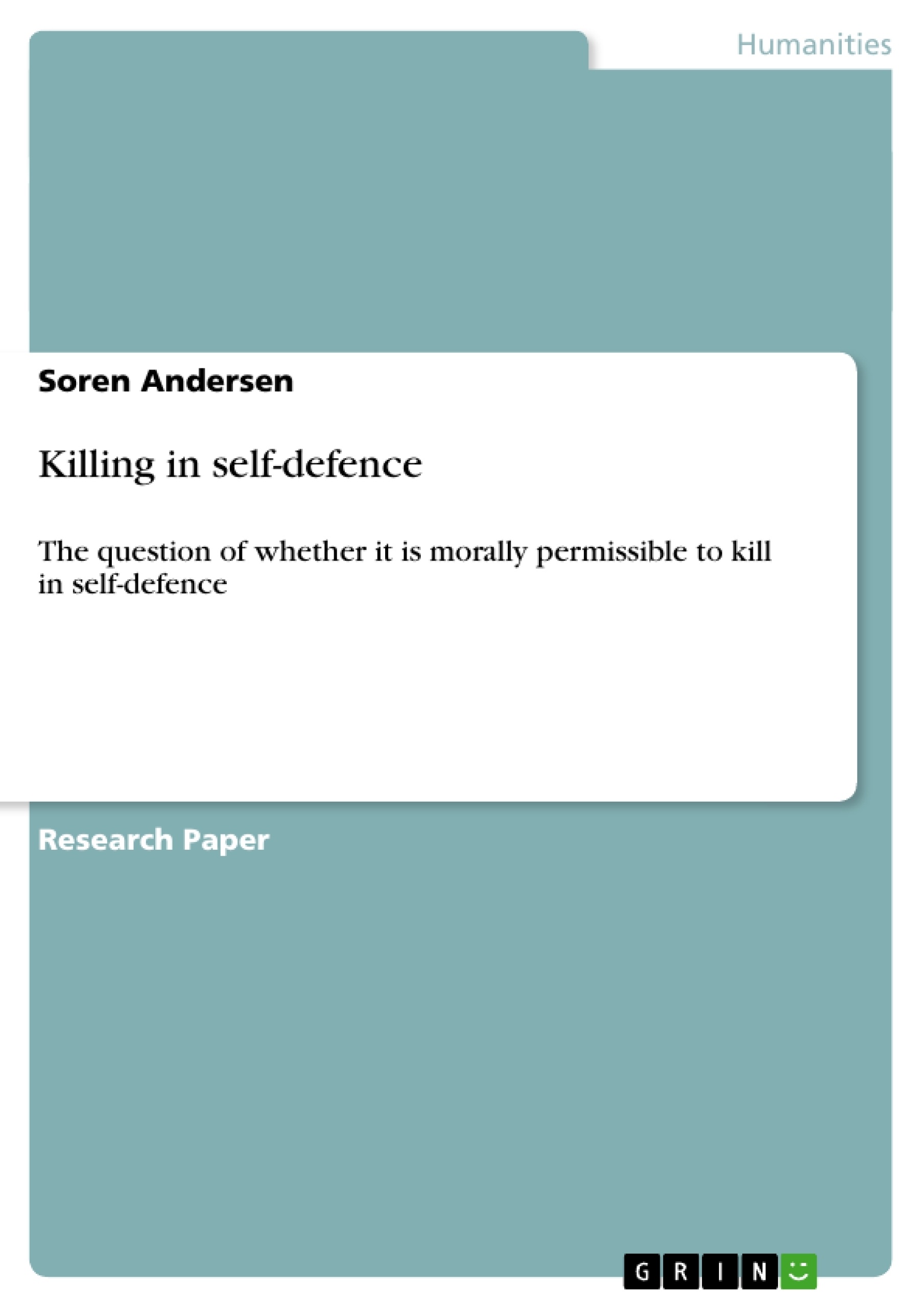This paper will investigate what implications this new position poses to Quong’s rejection of Otsukas stance on the moral impermissibility of killing the innocent aggressor and the innocent threat in self-defence, as well as the implications it might have on Thomson’s own 1991 views (Quong 2008:6)
1 In the case of the bystander-Trolley-case
1
The Ethics of Killing Killing in Self-Defence
My conclusion on this shall reveal that I generally agree with the conclusions of Quong, though I disagree with the way he reaches these conclusions. In doing this, I shall present some scenarios which might not fit neatly into the proposed categories of Thomson, in order to examine whether the categorisation hitherto used is adequate and to investigate the possible implications this might have for a theory of killing in self-defence
Inhaltsverzeichnis (Table of Contents)
- Killing in Self-Defence
- The problem
- Killing Innocent Aggressor/Threat
- Man on the track vs. man on the overpass. The moral (in)difference
- Causalities
Zielsetzung und Themenschwerpunkte (Objectives and Key Themes)
This paper investigates the moral permissibility of killing in self-defense, particularly focusing on the question of whether it is morally permissible to kill innocent aggressors and threats. The author critiques arguments made by Michael Otsuka and Jonathan Quong regarding the morality of killing innocent individuals in self-defense scenarios. The analysis centers around the trolley problem and its variations, exploring the implications of different perspectives on the moral difference between "letting die" and actively causing harm.
- The Ethics of Killing in Self-Defense
- Moral Permissibility of Killing Innocent Aggressors and Threats
- Agent-Relativity in Self-Defense Scenarios
- The Trolley Problem and its Variations
- Distinguishing between "Letting Die" and Actively Causing Harm
Zusammenfassung der Kapitel (Chapter Summaries)
The paper begins by introducing the ethical dilemma surrounding the permissibility of killing in self-defense, particularly in cases involving innocent aggressors or threats. The author then examines the argument presented by Jonathan Quong, who defends the permissibility of killing in such scenarios. The author scrutinizes Quong's approach by analyzing the moral difference between the "man on the track" and "man on the overpass" scenarios, arguing that the distinctions rely on misinterpretations of intent and actions. The analysis explores the potential shortcomings of Quong's argument and the adequacy of categorizations used to distinguish between different types of aggressors and threats. Finally, the paper concludes by highlighting a case study involving a transplant scenario that raises further challenges for Quong's argumentation.
Schlüsselwörter (Keywords)
The paper focuses on the ethics of killing in self-defense, exploring the moral permissibility of killing innocent aggressors and threats. Key concepts include agent-relativity, the trolley problem, "letting die" versus actively causing harm, and the distinction between bystanders and innocent aggressors/threats. The paper analyzes arguments presented by Michael Otsuka and Jonathan Quong, and examines the adequacy of existing categorizations in self-defense scenarios.
- Quote paper
- Soren Andersen (Author), 2009, Killing in self-defence, Munich, GRIN Verlag, https://www.grin.com/document/146963



